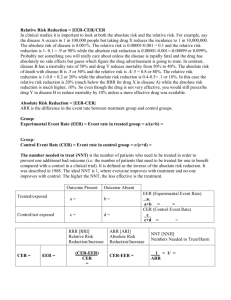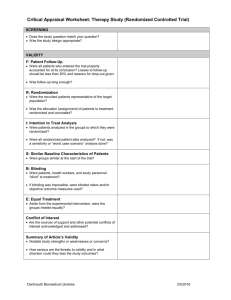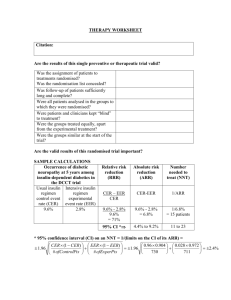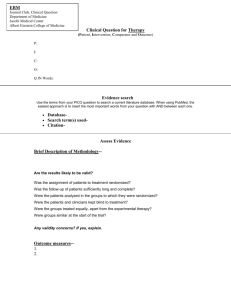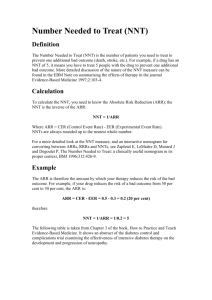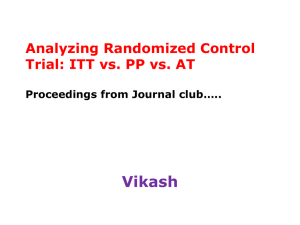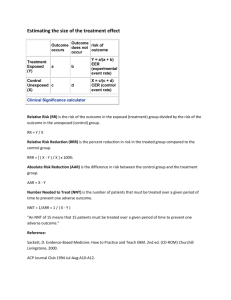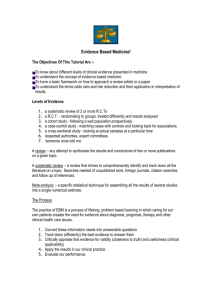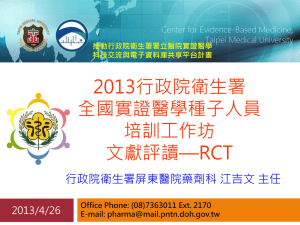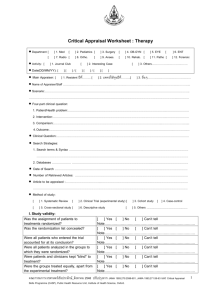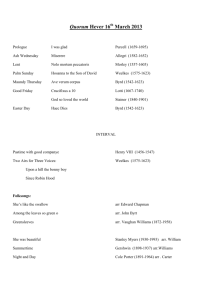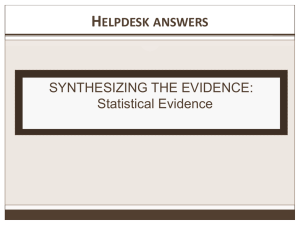Absolute risk reduction (ARR)
advertisement
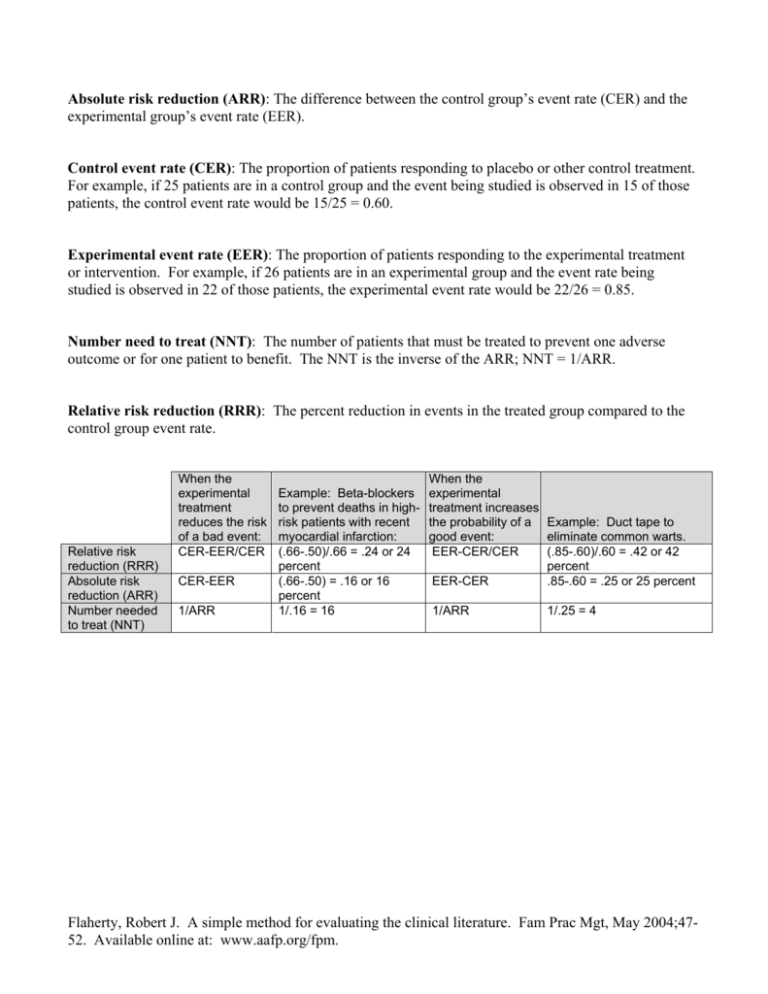
Absolute risk reduction (ARR): The difference between the control group’s event rate (CER) and the experimental group’s event rate (EER). Control event rate (CER): The proportion of patients responding to placebo or other control treatment. For example, if 25 patients are in a control group and the event being studied is observed in 15 of those patients, the control event rate would be 15/25 = 0.60. Experimental event rate (EER): The proportion of patients responding to the experimental treatment or intervention. For example, if 26 patients are in an experimental group and the event rate being studied is observed in 22 of those patients, the experimental event rate would be 22/26 = 0.85. Number need to treat (NNT): The number of patients that must be treated to prevent one adverse outcome or for one patient to benefit. The NNT is the inverse of the ARR; NNT = 1/ARR. Relative risk reduction (RRR): The percent reduction in events in the treated group compared to the control group event rate. Relative risk reduction (RRR) Absolute risk reduction (ARR) Number needed to treat (NNT) When the experimental treatment reduces the risk of a bad event: CER-EER/CER CER-EER 1/ARR Example: Beta-blockers to prevent deaths in highrisk patients with recent myocardial infarction: (.66-.50)/.66 = .24 or 24 percent (.66-.50) = .16 or 16 percent 1/.16 = 16 When the experimental treatment increases the probability of a Example: Duct tape to good event: eliminate common warts. EER-CER/CER (.85-.60)/.60 = .42 or 42 percent EER-CER .85-.60 = .25 or 25 percent 1/ARR 1/.25 = 4 Flaherty, Robert J. A simple method for evaluating the clinical literature. Fam Prac Mgt, May 2004;4752. Available online at: www.aafp.org/fpm.
